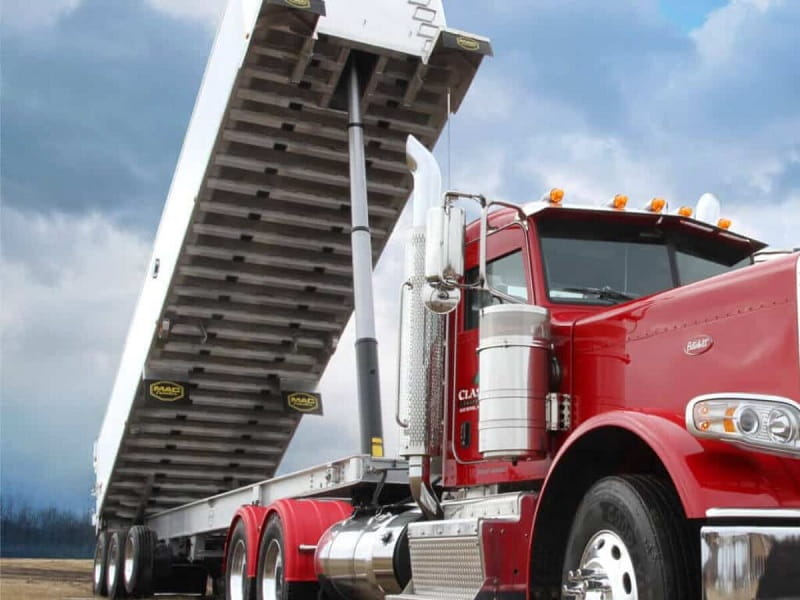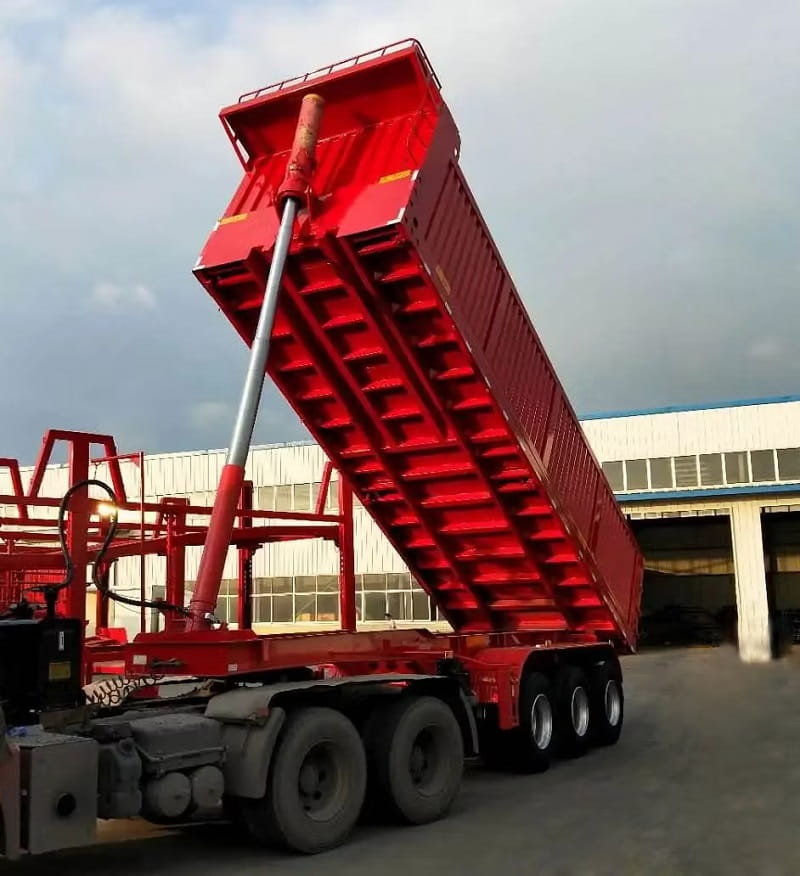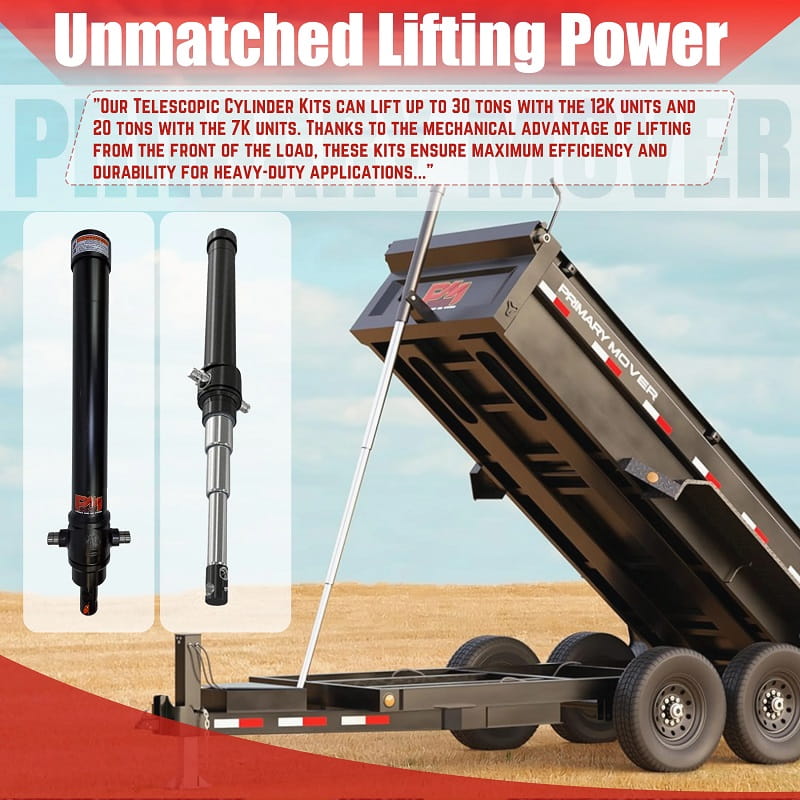Understanding the Dump Truck Hydraulic Cylinder: Functions, Components, and Maintenance catdumptruck.com | A dump truck is an indispensable vehicle in industries such as construction, mining, and transportation.
One of its most critical components is the hydraulic cylinder, which enables the truck bed to lift and dump materials efficiently.
Understanding the function, components, and maintenance of a dump truck hydraulic cylinder is crucial for ensuring optimal performance and longevity.
Read More: Understanding the Dump Truck Hydraulic Pump: Functions, Components, and Maintenance
What is a Dump Truck Hydraulic Cylinder?

A dump truck hydraulic cylinder is a mechanical actuator that converts hydraulic energy into linear motion. It facilitates the lifting and lowering of the dump bed, allowing for the unloading of heavy materials.
This component operates by using pressurized hydraulic fluid, which moves a piston within the cylinder to create the necessary force to lift the dump body.
Types of Hydraulic Cylinders
Dump trucks utilize different types of hydraulic cylinders based on their operational needs. The primary types include:
Single-Acting Cylinders
Operate in one direction, using hydraulic pressure to extend the piston while relying on gravity or external force to retract it.
Common in smaller dump trucks with lighter loads.
Double-Acting Cylinders
Utilize hydraulic pressure to both extend and retract the piston, offering greater control over the dump bed movement.
Suitable for larger dump trucks that require more precise operation.
Telescopic Cylinders
Composed of multiple stages that extend sequentially, providing a longer stroke with a compact design.
Ideal for heavy-duty dump trucks requiring high lifting capabilities.
Each type of hydraulic cylinder serves a specific purpose and is selected based on the truck’s size and load requirements.
Key Components of a Dump Truck Hydraulic Cylinder
A hydraulic cylinder consists of several crucial components that work together to facilitate movement. These include:
Cylinder Barrel
The outer casing that houses the piston and hydraulic fluid.
Piston and Piston Rod
The piston moves inside the cylinder, generating force to extend or retract the rod, which connects to the dump bed.
Seals and Gaskets
Prevent hydraulic fluid leaks and ensure smooth operation.
End Caps and Mounting Brackets
Secure the cylinder in place and provide attachment points for movement.
Hydraulic Fluid Ports
Allow the controlled flow of hydraulic fluid into and out of the cylinder.
Each of these components plays a crucial role in ensuring the efficiency and reliability of the hydraulic system.
How a Dump Truck Hydraulic Cylinder Works
The operation of a dump truck hydraulic cylinder follows a systematic process:
Activation of Hydraulic Pump
The hydraulic pump pressurizes the fluid, sending it through the control valve.
Fluid Movement into the Cylinder
Pressurized fluid enters the cylinder, pushing the piston and extending the rod to lift the dump bed.
Dumping the Load
As the dump bed rises, materials are unloaded efficiently.
Lowering the Dump Bed
The control valve redirects fluid, allowing the cylinder to retract and return the dump bed to its resting position.
This process ensures a smooth and controlled unloading of materials, making the dump truck highly efficient in operation.
Understanding the Dump Truck Hydraulic Cylinder: Functions, Components, and Maintenance
Common Issues and Troubleshooting
Despite their durability, hydraulic cylinders can develop issues over time. Some common problems include:
Slow or Weak Lifting
Possible causes: Low hydraulic fluid levels, worn-out seals, or internal leaks.
Solution: Check fluid levels, inspect seals, and replace damaged components.
Hydraulic Fluid Leaks
Possible causes: Worn-out seals, cracked cylinder barrel, or loose fittings.
Solution: Replace seals, inspect for cracks, and tighten fittings.
Cylinder Not Extending or Retracting Properly
Possible causes: Blocked hydraulic lines, faulty control valve, or damaged piston.
Solution: Clean hydraulic lines, inspect control valve, and check piston integrity.
Excessive Heat in Hydraulic System
Possible causes: Overworked system, contaminated fluid, or poor cooling.
Solution: Allow the system to cool, replace hydraulic fluid, and ensure proper ventilation.
Routine inspection and timely repairs can prevent these issues and ensure efficient operation.
Maintenance Tips for a Dump Truck Hydraulic Cylinder
Proper maintenance of hydraulic cylinders is essential to maximize their lifespan and efficiency. Here are some key maintenance tips:
Regular Fluid Checks
Ensure hydraulic fluid levels are sufficient and free from contamination.
Seal and Gasket Inspection
Check for signs of wear or leaks and replace seals as needed.
Clean the Cylinder Regularly
Prevent dirt and debris from entering the system, which can cause internal damage.
Inspect for Physical Damage
Look for dents, cracks, or signs of wear on the cylinder barrel and piston rod.
Lubricate Moving Parts
Ensure smooth operation by applying the recommended lubricant to necessary components.
Monitor for Unusual Noises or Vibrations
Any irregularities in operation may indicate underlying issues that need immediate attention.
By following these maintenance practices, dump truck operators can reduce downtime and extend the life of their hydraulic cylinders.
Conclusion
The hydraulic cylinder is a vital component of a dump truck, playing a crucial role in lifting and lowering the dump bed for efficient unloading.
Understanding its functions, components, and maintenance needs ensures reliable performance and longevity. Regular inspections and timely repairs help prevent costly failures, improving the overall efficiency and durability of the dump truck’s hydraulic system.
Investing in high-quality hydraulic cylinders and adhering to proper maintenance practices will ensure dump trucks continue to operate at peak performance for years to come.
- The Timeless Workhorse: The Legacy of the Old Mack Dump Truck - April 18, 2025
- 2006 Mack Dump Truck: Exploring the Power and Reliability - April 16, 2025
- Mack Dump Truck Tri Axle - April 15, 2025





